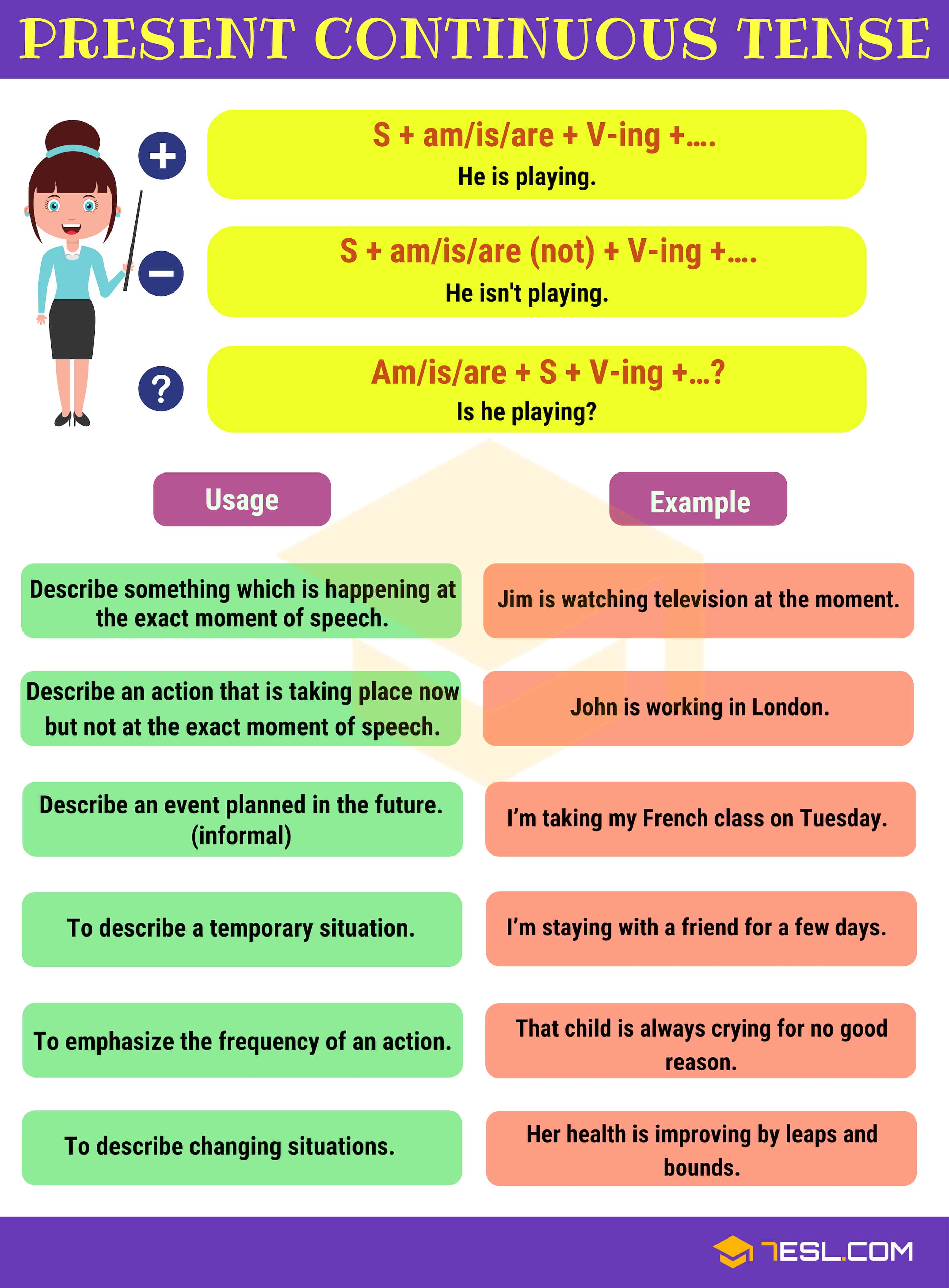

The reference covers the present continuous tense, including its definition, structure, examples, usage, and a tense chart. It also provides insights on how to use the present continuous tense correctly, which will help improve your sentence formation and fluency. You can learn how and when to use the present continuous tense in English with useful grammar rules and example sentences.
The present continuous tense indicates actions happening right now or ongoing actions. It is essential for expressing events occurring at the moment or temporary situations.

The present continuous tense describes actions that are currently happening or ongoing. It consists of two parts: the present tense of the verb “to be” (am, is, are) and the present participle of the main verb (ending in -ing).
Example:
This tense is used to highlight ongoing activities and to show that something happens at the current moment.
The present continuous tense uses the verb “to be” (am, is, are) followed by the main verb in its present participle form (-ing).
Verb “to be” usage:
Example with present participle forms:
The present participle is formed by adding -ing to the base form of the verb. For example, “talk” becomes “talking”.
Affirmative Form:
Negative Form:
Interrogative Form:
These structures help to form statements, negate them, or ask questions regarding ongoing actions.
The present continuous tense is useful for describing actions that are currently happening, making future plans, or discussing temporary states.
The present continuous tense describes actions happening at the moment of speaking.
Example: She is reading a book.
This shows that the action is taking place now. Other examples include:
The present continuous tense can also indicate future arrangements that have already been planned.
Example: They are meeting us at 6 PM.
This makes it clear that the plan is set. Other examples:
This tense is suitable for temporary situations or actions.
Example: He is living with his parents for now.
It implies the situation is not permanent. Other examples:
Exercise 1: Fill in the Blanks
Complete the sentences using the present continuous tense.
Exercise 2: Form Questions
Convert the statements into questions.
Exercise 3: Correct the Mistakes
Identify and correct the mistakes in the sentences.
Exercise 4: Describe the Picture
Look at the picture of a busy park. Describe what the people are doing.
Exercise 5: Multiple Choice
Choose the correct form of the verb.
Learn all (12) tenses in English with useful grammar rules, examples and ESL worksheets.
An experienced English grammar teacher since 2015, with a dedication to helping students improve their language skills.
Latest posts by Grammargeek (see all)